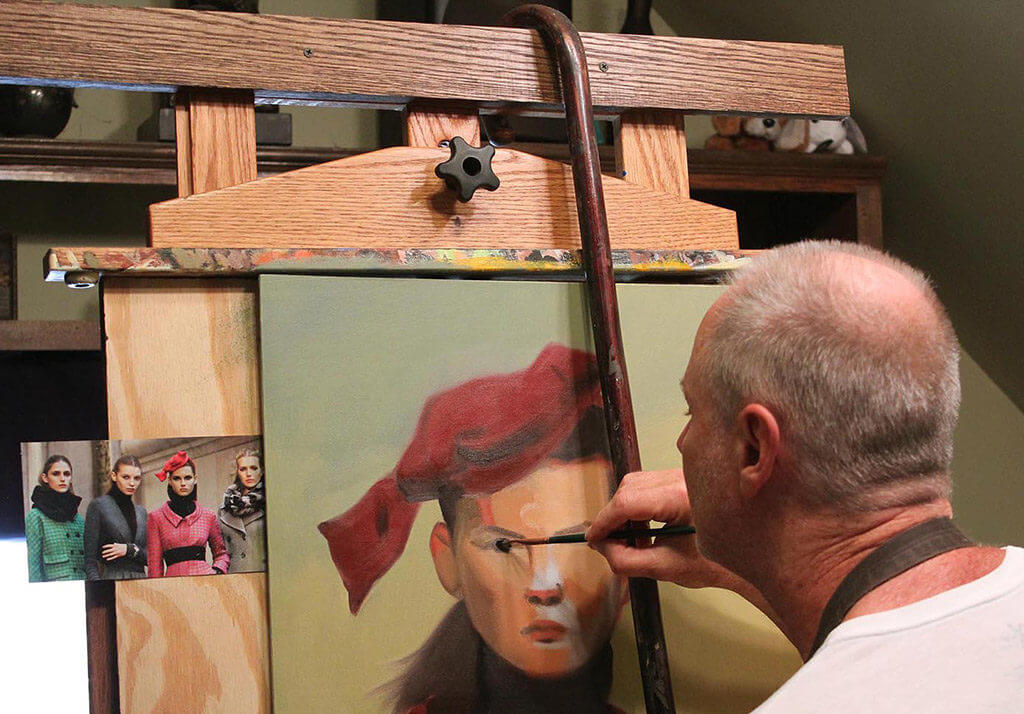Hello, fellow artists!
If you’re like me, you probably have your own working methods that you’ve developed over the years. Today I wanted to share four little things that I do on a regular basis when working in oils. I’ll give them silly titles just for fun.
Cane n’ Able
I use an old cane hooked over the top of my easel to support myself and my paintbrush when I do close-up work. It’s straight with a wonderful “Shepherd’s Hook” handle—and it’s invaluable anytime I need to lean-in close to add those important details.
I got this cane from a friend, but you can find some good ones in antique shops and flea markets. Just make sure the body of the cane is as straight as possible. That way you can use it as a straight-edge to make horizontal and vertical brushstrokes by dragging your brush along the body of the cane when it’s hooked on the top of the easel or the sides of the canvas.
Painting With a Broad Brush
I love the way oil paint can be smoothed-out, blended, and blurred—especially in the underpainting and middle stages. I find brushstrokes can be unnerving at times; especially if I’m uncertain which way a painting is going. So, to get the right “feel” that I can paint over later on when the oil paint has dried, I use a broad soft brush and just lightly blend-over the area I’ve been working on.
Not every painting needs this, but in my style, most do.
Palate Cleanser
For my painting palette, I use a square piece of glass, on top of either a white or a grayish-brown base. When I need to change the paint or clean the palette I use this four-inch scraper made by HDX. It’s super-efficient and comes with replacement blades. You can pick these up at Home Depot or similar places.
Just wipe the accumulated paint off the blade (careful of your fingers!) with a paper towel (I use Viva: hardly any lint) and you’re good to go.
Topsy Turpsey
What to do with paint-saturated turpentine/mineral spirits? Why not “recycle” it by using sawdust in an an empty paint can??
Simply get some sawdust from a construction site (or by buying sawdust cat litter – I found Arm & Hammer’s FELINE PINE in my local Petco) and fill the can about 3/4 full of sawdust. Pour your used turps in the sawdust and put the lid back on. Do this a few times to build-up a reserve of recycled turps. It takes around a week for the sawdust to separate the paint from the solvent.
When you want to use the recycled solvent, carefully tip the paint can so the “cleansed” turps spill back out into a clean container with no sawdust following after. The recycled turps will now have an amber tint but will work just as well as if it was new. You can repeat this process a number of times. When all the sawdust gets completely bound-up with paint, just close the lid on the can and discard in the trash, making it an eco-friendly way to get rid of paint/solvents.
Special thanks to Lyman Dally for sharing these fantastic painting tips! To learn more, please visit his website.
This post may contain affiliate links.




